| Author |
 Topic Topic  |
|
loongfah
Member Purpuricenus
 
Singapore
376 Posts |
 Posted - 11/12/2016 : 20:08:55 Posted - 11/12/2016 : 20:08:55



|
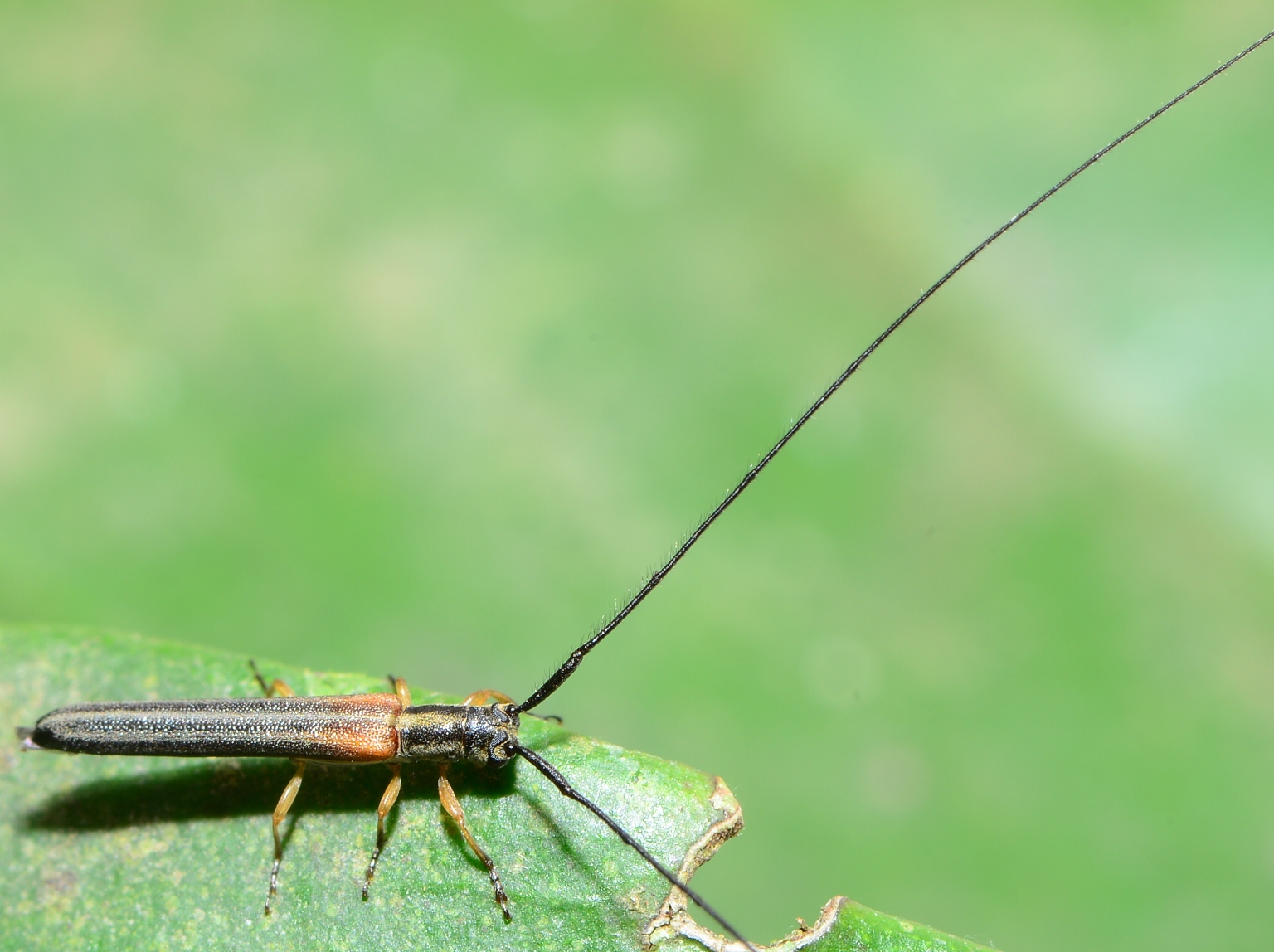
510.04 KB
Malaysia: Perak
Very long antenna without white.
Agapanthiini sp.? Not sure what genus. |
Edited by - Xavier on 08/01/2017 09:48:28 |
|
|
Xavier
Scientific Collaborator
    
France
12338 Posts |
 Posted - 12/12/2016 : 10:14:35 Posted - 12/12/2016 : 10:14:35



|
| An Agapanthiini ? |
Edited by - Xavier on 12/12/2016 10:17:49 |
 |
|
|
dryobius
Member Rosenbergia
   
USA
1889 Posts |
 Posted - 12/12/2016 : 13:48:45 Posted - 12/12/2016 : 13:48:45



|
Antennal sockets are usually very close together for Agapanthiini.
It could be Nyctimenius?? |
 |
|
|
Beckey
Member Rosalia
  
Japan
553 Posts |
 Posted - 07/01/2017 : 23:24:03 Posted - 07/01/2017 : 23:24:03



|
| Pseudocalamobius sp. |
Edited by - Beckey on 07/01/2017 23:24:19 |
 |
|
|
loongfah
Member Purpuricenus
 
Singapore
376 Posts |
 Posted - 08/01/2017 : 06:52:21 Posted - 08/01/2017 : 06:52:21



|
Thank you Shinichi for your suggestion! Isn't that the first Pseudocalamobius in Peninsular Malaysia region or you have collected them in Malaysia too?
Attached the bottom view and view of the fron. It seems that there are no concavities fringed with hairs at the base of 4th and 5th abdominal sternites (perhaps a female?), and is the fron vertical enough?
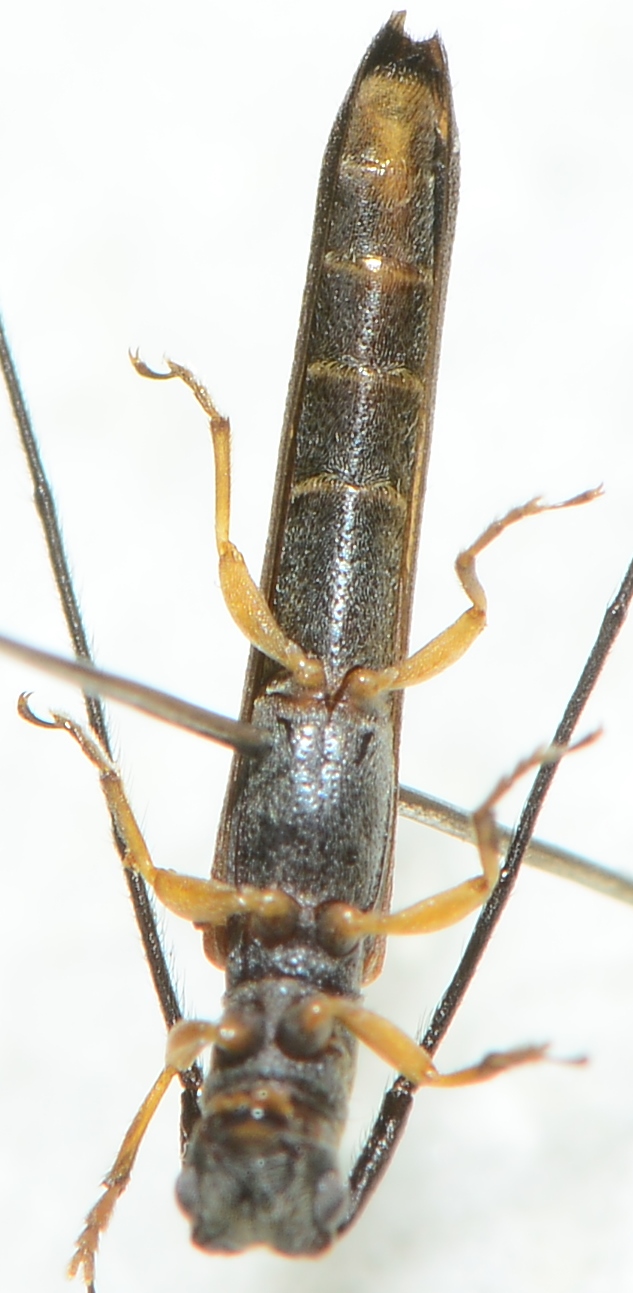
283.57 KB
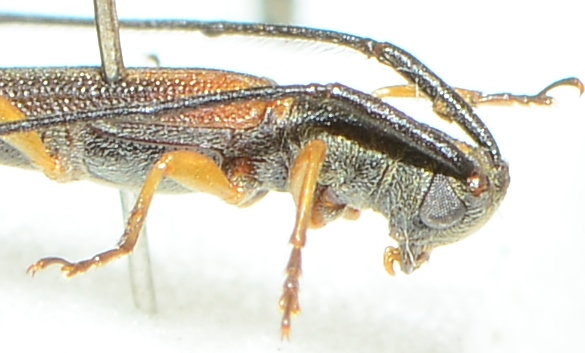
135.88 KB |
 |
|
|
Xavier
Scientific Collaborator
    
France
12338 Posts |
 Posted - 08/01/2017 : 09:47:53 Posted - 08/01/2017 : 09:47:53



|
| Quite similar to holotype picture of Elongatopothyne basirufipennis Breuning, 1963 |
 |
|
|
Beckey
Member Rosalia
  
Japan
553 Posts |
 Posted - 08/01/2017 : 15:44:15 Posted - 08/01/2017 : 15:44:15



|
Hi loongfah,
I caught the beetle that seems to same genus as yours at Selangor.
I didn't recognized the genus Elomgatopothyne until I read this topic.
What is different between Elomgatopothyne and Pseudocalamobius?

102.92 KB |
 |
|
|
Xavier
Scientific Collaborator
    
France
12338 Posts |
 Posted - 08/01/2017 : 15:56:21 Posted - 08/01/2017 : 15:56:21



|
In Breuning's Laos fauna (1970)
. 3rd antennomera much shorter than 4th ...Elongatopothyne
. 3rd antennomera shorter than 4th ...Pseudocalamobius |
 |
|
|
Xavier
Scientific Collaborator
    
France
12338 Posts |
 Posted - 08/01/2017 : 16:18:46 Posted - 08/01/2017 : 16:18:46



|

90.57 KB
Pseudocalamobius discolineatus Pic, 1927 & Elongatopothyne basirufipennis Breuning, 1963 from Laos. |
 |
|
|
Beckey
Member Rosalia
  
Japan
553 Posts |
 Posted - 09/01/2017 : 00:36:36 Posted - 09/01/2017 : 00:36:36



|
Thank you, Xavier.
According to these image, the antennomere ratio of 3rd/4th is as below.
loongfah:0.74
Beckey:0.63
Xavier left:0.71
Xavier right:0.61
Wow..., the key doesn't function well. Then, I checked Breuning's Laos fauna.
Front non ou peu r#233;tr#233;ci vers le dessous... Elongatopothyne
Front tr#232;s sensiblement r#233;tr#233;ci vers le dessous ... Pseudocalamobius
As a result, we should check frons. |
 |
|
|
loongfah
Member Purpuricenus
 
Singapore
376 Posts |
 Posted - 09/01/2017 : 03:13:33 Posted - 09/01/2017 : 03:13:33



|
The frons of my specimen does not seem to narrow significantly, thus it seems to point to Elongatopothyne:
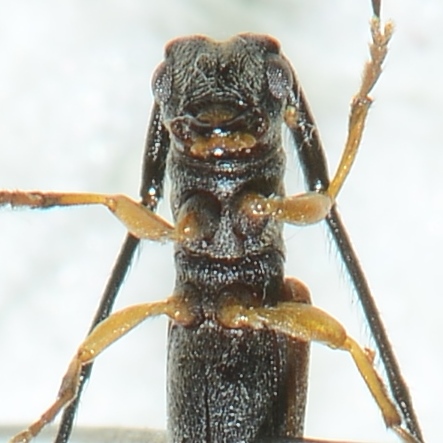
122.92 KB |
 |
|
|
Xavier
Scientific Collaborator
    
France
12338 Posts |
 Posted - 09/01/2017 : 10:51:23 Posted - 09/01/2017 : 10:51:23



|
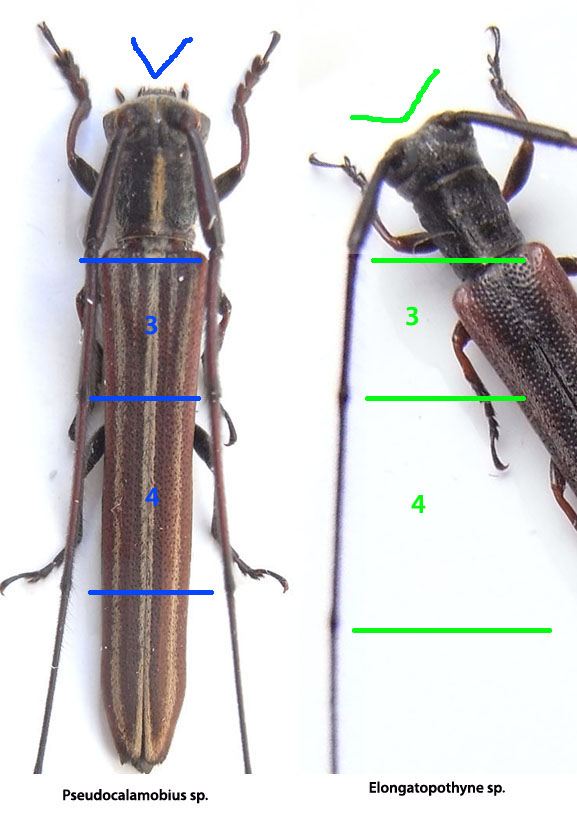
100.18 KB
For me, the feature of length of antennomera 3 & 4 works very well .
There is another feature to look ( V signs on picture) :
Tuber of antenna low -> Elongatopothyne
Tuber of antenna very high -> Pseudocalamobius |
Edited by - Xavier on 09/01/2017 13:12:36 |
 |
|
|
Beckey
Member Rosalia
  
Japan
553 Posts |
 Posted - 09/01/2017 : 13:19:46 Posted - 09/01/2017 : 13:19:46



|
Head and frons of my specimens ( I don't have Elongatopothyne ).
I can't find how to distinguish these genera, but my Malaysian one resembles loongfah's one.

112.46#160;KB |
Edited by - Beckey on 09/01/2017 13:28:53 |
 |
|
|
Xavier
Scientific Collaborator
    
France
12338 Posts |
 Posted - 09/01/2017 : 13:29:11 Posted - 09/01/2017 : 13:29:11



|
Hi Shinichi,
I think your specimen belongs to Elongatopothyne genus because of length of antennomera 3 and 4(very long), and shape of tuber of antenna ( high ). |
Edited by - Xavier on 09/01/2017 13:29:41 |
 |
|
|
Beckey
Member Rosalia
  
Japan
553 Posts |
 Posted - 12/01/2017 : 12:47:24 Posted - 12/01/2017 : 12:47:24



|
Do you mean like this?
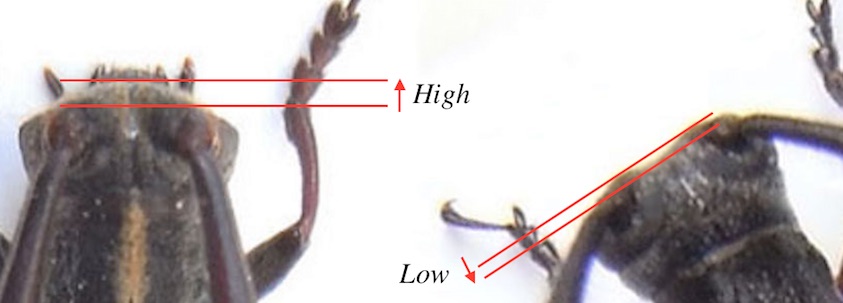
52.61 KB |
 |
|
|
Xavier
Scientific Collaborator
    
France
12338 Posts |
 Posted - 12/01/2017 : 13:07:46 Posted - 12/01/2017 : 13:07:46



|
| Yes, that's what I understand. |
 |
|
 Topic Topic  |
|


